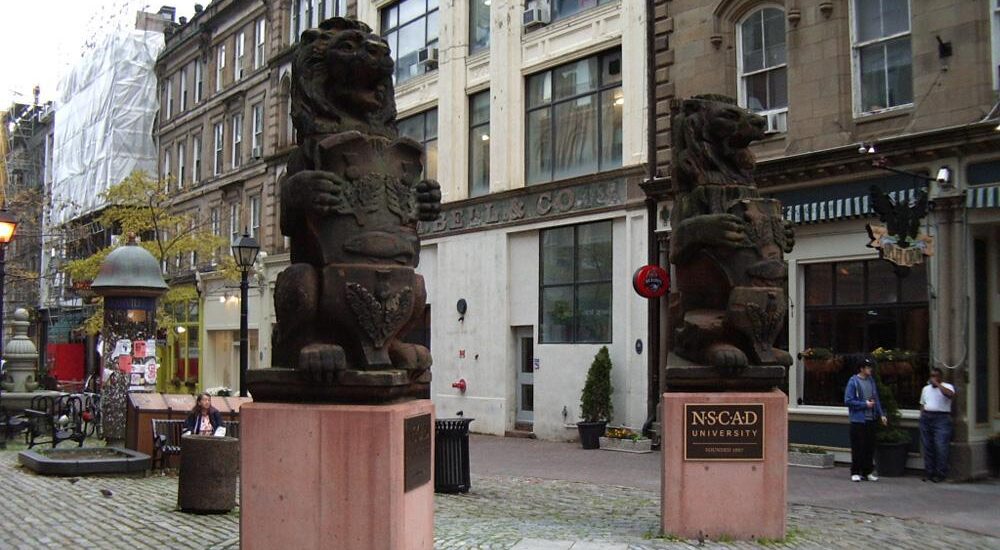
If you think creativity, learning and exploration should be priorities for any university board of governors, you’re in good company. Aoife Mac Namara thought so and she should know. Highly regarded as Simon Fraser University’s Dean of Communication, Art and Technology, she left that post a year ago and returned to her native Nova Scotia, to revitalize the prestigious yet troubled Nova Scotia College of Art and Design. What could go wrong?
Only one thing, but it was huge. As a bold first step—prescient given recent events—Dr. Mac Namara hired esteemed art historian Charmaine Nelson away from McGill University to launch an Institute for the Study of Canadian Slavery (a key initiative, given how few people know that Canada allowed slavery until 1833). However, while the students and faculty supported Dr. Mac Namara’s priorities, the board thought differently. And so, a week almost to the day after she hired Dr. Nelson, the board met secretly to fire Dr. Mac Namara.
Soon after her dismissal, the venerated Halifax journalist Tim Bousquet revealed that its cause was real estate. The board resented Dr. Mac Namara’s attention to conflicts of interest, particularly her concern that board chair Louise Anne Comeau allowed multiple board members, including board vice-chair Sean Kelly, to participate in talks about a possible deal involving a developer called the Armour Group, even though they had ties to the company. In response, NSCAD’s Faculty Union passed a motion of non-confidence in the board by 96.3%. Meanwhile, a group called “Friends of NSCAD” launched a petition on change.org to fire the board and reinstate Dr. Mac Namara, which now has over 5000 signatures and gathers more each day, nationally and internationally. Clearly, academics and artists are livid.
And everyone else should be upset too. While we hear much lately about the interlocking dangers of “cancel culture” versus “free speech,” NSCAD’s example shows that the real threat to universities is corporatization, as long-term decreases in public funding destabilize faculty and students by driving universities into the arms of donors with self-serving agendas. (That’s why declining public funding correlates with spiking concern about scientific freedom, especially in medical research.) Outside interests that once influenced university decision-making now drive it. And as corporatization ravages our universities—and most other public institutions—we all are poorer for it. People who foment dissent and inconvenience can be hellishly annoying but they also, as William Kaplan says in his book Why Dissent Matters, sometimes see important things that the rest of us miss.
And two other crucial lessons emerge from this situation. First, contrary to the dispute about cancel culture that we mentioned earlier, in crisis situations, equity and academic freedom often align. Dr. Mac Namara’s effort to pursue equity objectives was derailed by a board whose firing of her was, as Dr. Nelson notes, anti-anti-racist—the two negatives, classically, annulling each other. Second, university boards—like many other boards, including at corporations—expect that even egregious misdeeds will go unpunished. The standard “out” is for the board to acknowledge their mistake but then say, it’s too late; we have to move ahead. This excuse is rubbish, not least because NSCAD has a perfectly capable internal option for interim president in long-time VP Ann-Barbara Graff. Boards should not have free licence to behave irresponsibly and should be held accountable when they do.
Finally, it is important to underscore the issue here. It is not that a board fired a university president. Sometimes that action is appropriate— the University of Saskatchewan’s Ilene Busch-Vishniac comes to mind. Rather, it’s that the board acted precipitously, without consultation and secretly, defying community opinion, good governance and NSCAD’s best interests. Those who follow university governance will recognize this pattern. It’s the extremity of the NSCAD situation that demands a decisive, public response.
A decade ago, Elizabeth Church wondered in the Globe and Mail if the real estate portfolios of many universities meant that real estate professionals would usurp the place of academics as university presidents. For NSCAD, hyperbole became reality, at the expense of university self-governance, academic freedom and the university’s mission as a site for independent creativity, research, teaching and public engagement. That’s why Aoife Mac Namara needs to be reinstated, Louise Ann Comeau and Sean Kelly need to resign as chair and vice-chair of the NSCAD Board and Haligonian real estate interests need to butt out. And resignation is the point: we don’t need the government to intervene to fire Ms Comeau and Mr. Kelly, since government interference in university affairs created this appalling situation in the first place.
Political commentator John Oliver says that the answer to the question “where do you draw the line?” is, “literally, somewhere. You draw the line somewhere.” For NSCAD, and the rest of us, the place to draw the line is here.
Samir Gandesha is a political theorist and Director of the Institute for the Humanities at Simon Fraser University. He is editor, most recently, of Spectres of Fascism.
Charles Reeve is an art historian at OCAD University, where he is past president of the Faculty Association. He is co-editor, with Rachel Epp Buller, of Inappropriate Bodies: art, design, and maternity.
With a special thanks to our generous donors who make publication of the Nova Scotia Advocate possible.
Subscribe to the Nova Scotia Advocate weekly digest and never miss an article again. It’s free!




What a prescient and deeply disturbing article illuminating the anti- anti racist agenda of NSCAD’s Board of Governors. (Twenty years ago I taught at NSCAD as a visiting artist in the painting department after being an exchange student from Camberwell School of Art in London UK in 1987. The experience of being a young artist in a deeply progressive and holistic creative environment changed my life for the good and I was given the grounding at NSCAD in Halifax Canada that has helped me develop and sustain my practice as an artist. It provided the fertile ground for my Creative life and the successes I have had to this day.)
I wholeheartedly support the re-instatement of Aoife Mac Namara after this egregious dismissal, and lend my support to The Faculty and students of NSCAD in their desire to reverse this impulsive and shortsighted decision. Dr Aoife Mac Namara needs to be able to get on with her task of bringing NASAD back to life as the dynamic Art School it was until recently, and help restore it to profoundly changing people’s lives for the better, whatever their sex, ethnicity and calling, and serving the community and providing the artistic pulse and heart of the Province.